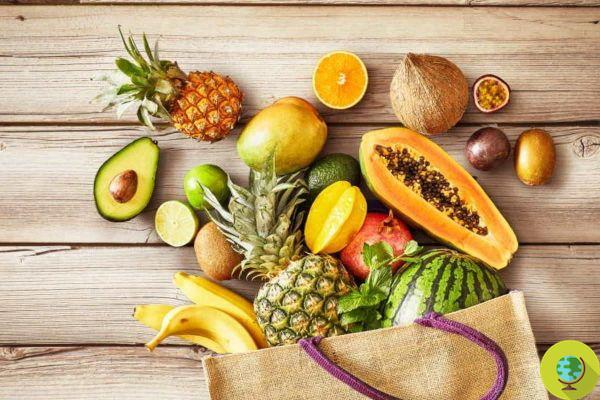
Do you know about latex-fruit syndrome? It is the phenomenon whereby people who are allergic to latex develop a similar reaction even with certain fruits that contain proteins recognized by the immune system as homologous to those that trigger the allergy.
Don't store avocado like this: it's dangerous
Have you ever heard of cross allergies? It is essentially a cross-reactivity or cross-reactivity between allergies to pollen, mites or substances such as latex and nickel and different foods. In particular, those who are, for example, allergic to latex should be careful to consume certain types of fruit.
Latex is a natural material that comes mainly from the tropical rubber tree, Hevea Brasiliensis, also known as the rubber tree. It comes in the form of a milky and viscous liquid. It is totally ecological and recyclable, with natural characteristics such as elasticity, durability and hygiene that make it suitable for various uses.
Latex can often give rise to a strong allergy in people which manifests itself as an exaggerated and sudden reaction of the organism to the proteins contained in natural rubber latex. The symptoms of this allergy can be varied and more or less strong depending on the case. It usually manifests itself with hives, redness and itching, swelling and edema, conjunctivitis and again, rhinitis, sneezing, cough, asthma, dyspnoea and (in the most severe and rare cases) anaphylactic shock and death.
When you suffer from latex allergy, sometimes it may not be enough to stay away from the primary substance, because it can happen to have problems even with totally different substances and foods. This is due to a particular phenomenon that takes the name of cross allergy or cross reactivity
As for the particular case of latex allergy, one search published in the journal Biochemical Society Transactions, estimates that around 30-50% of latex allergy sufferers are sensitive to plant-based foods, especially fruit. Specifically, there are some fruits in particular from which it is good to keep away if you suffer from latex allergy as they would contain proteins that have allergenic similarities with latex.
These fruits that can present cross-reactivity with lactic are:
- banana
- Kiwi
- avocado
- fishery
- melosine
- tomato
- chestnuts (but also hazelnuts)
The cause of this problem, which is called 'latex-fruit syndrome'is a homology between molecules present both in the latex and in these fruits. These molecules are recognized as the immune system of allergy sufferers in both cases as 'enemies'. In this case, in addition to avoiding taking these certain types of fruit - which among other things can be allergenic in themselves - it is good to contact your doctor for more clarification on how to act. Also because in the most serious cases there is a risk of severe anaphylaxis.
Pollen and food cross allergies: a useful mirror!
Photos: Allergipedia
Follow us on Telegram | Instagram | Facebook | TikTok | Youtube
On cross allergies you might also be interested in:
- If you are allergic to grass pollen, you should be careful about eating these 10 fruits as well
- The 10 most allergenic pollens
- Pollen and food cross allergies: a useful mirror!
- Nickel: 10 foods that contain more


























